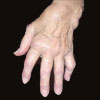What Are Autoimmune Diseases?
A health article about Autoimmune Diseases from Your Health Online the A to Z directory of dealing with Health Problems & nutritional Self Care Strategies
Autoimmune diseases affect between 14 million and 20 million people in the United States, with many more at risk for developing an autoimmune disease.
Some sources even say as many as 50 million people are affected by it in the US alone.
Experts also note that the prevalence of autoimmunity has been on the rise.
Women are almost three times as likely to develop an this than men, making it a significant issue facing women’s health today.
In addition, certain communities such as Hispanic, Native American, and African Americans are more at risk for developing one.
There are 80 known autoimmune diseases that include well-known ones like diabetes 1 and rheumatoid arthritis, and lesser-known ones like Achalasia or Dressler’s Syndrome.
In this guide, we will look at what an autoimmune disease is, major types, common symptoms and causes, diagnosis, and available treatments.

What Is an Autoimmune Disease?
In a normal body, the immune system works to protect the body from disease and dangerous pathogens. For some people, though, this important system begins working against the body.
Instead of defending it, begins attacking cells, tissues, and organs of the body with antibodies.
Essentially the body starts to see normal parts of the body as threats it needs to eradicate.
Another way to understand autoimmunity is to compare it to an allergy.
When a person has an allergy, the body thinks that something is dangerous even when it’s not (like people who react to peanut butter or shellfish).
The difference between the two is instead of treating peanut butter like a dangerous invader, the immune system thinks of its own body’s tissue as the invader.
Quick History of Autoimmunity Disease Research
It wasn’t until the 1950s that doctors and scientists began to learn that autoimmune diseases existed.
While they knew things like rheumatoid arthritis and lupus were real diseases, they did not know what caused them.
In fact, predating this time some believed that the body could not attack itself.
Paul Ehrlich, a German physician and bacteriologist coined the term “horror autotoxicus” which meant “horror of self-toxicity.”
He theorized that a body would not attack itself because it was innately averse to self-harm.
However, with the discovery of the way the immune system reacted to allergens and anaphylaxis, scientists and doctors began to discover that the immune system may not always work in the appropriate way.
During this same time, Henry G. Kunkel, an American immunologist, began studying patients with Lupus and arthritis at Rockefeller Hospital.
According to Rockefeller University:
Using the newly developed tools of protein chemistry, Kunkel and his coworkers demonstrated that certain antibodies in the blood of people with rheumatoid arthritis reacted with other antibodies as if they were antigens (the rheumatoid factor).
When found in the synovial fluid of joints, the resulting complexes caused inflammation. Kunkel also discovered and characterized many autoantibodies in lupus.
This research showed that in some cases a body’s immune system could, and would, mistake good tissue as a foreign intruder and treat it as a threat.
What Is the Role of the Immune System?
When learning about autoimmune diseases, it’s helpful to first understand the role of a healthy immune system.
The immune system works by removing microbes that don’t belong in the body. When a germ or virus is introduced to the body, the immune system acts quickly to remove the threat.
The symptoms you experience when you’re sick are often the body’s way of removing the intruder.
For instance, when you have a fever, that’s the body’s way of making you inhospitable to the virus. A virus does not survive well with higher than normal temps or temps that fluctuate.
That’s why some people will recommend not using a fever reducer for a low-grade fever.
An immune system may also trigger a runny nose to help remove germs or viruses from the sinuses, and coughing and sneezing are meant to remove mucus that contains unhealthy microbes.
A properly working immune system helps fend off lots of germs, viruses, fungi, and other foreign pathogens even before they make us sick.
While we do get sick sometimes, there are a lot of sicknesses that are eradicated before we have any major symptoms.
The immune system is broken into two major parts that work closely together. These parts are:
● Innate immune system. This is your body’s first line of defense against foreign intruders. This immune response is triggered when you get a cut or initially contract a cold. The innate immune system responds the same way to all pathogens and its job is to keep things like bacteria from spreading through the body.
●
Adaptive immune system. The second part is the
adaptive immune system. If the innate immune system is not able to remove the
foreign pathogen, the adaptive immune system steps in.
Its job is to identify and target the intruder. It even “remembers”
foreign materials that it has come across before and the response time is
faster the second time it’s introduced.
It’s also responsible for creating antibodies that attach to and neutralize the intruder.
When a person develops an autoimmune disease, the body uses these same defenses but begins to turn on itself.
The guards meant to protect the fort are instead attacking it. The dysfunctional immune system manifests in a number of different types of autoimmunity producing many different symptoms
Types of Autoimmune Diseases

There are over 80 identified autoimmune diseases, but many of them are rare.
Asherson’s Syndrome is an autoimmune disease that causes blood clotting in multiple organ systems. Though this disease is very serious, it’s also incredibly uncommon.
Only 300 people have been identified with this disease since 1992 when it was first discovered.
In this section, we’ll cover some of the most common types of autoimmune diseases that affect a larger population of people.
The other types of autoimmune diseases do have a tremendous negative effect on people, but the likelihood of developing them is small.
1. Type 1 Diabetes
Type 1 diabetes is a type of autoimmune disease that mistakenly attacks the cells of the pancreas. The pancreas creates insulin for the body which is a hormone that helps regulate blood sugar levels.
With this part of the body under attack, a person with type 1 diabetes is prone to high blood sugar, which damages blood vessels and organs like the heart, kidneys, and eyes.
Some research is coming out that says type 2 diabetes may also be an autoimmune disease.
Healthline explains:
Researchers have found evidence that insulin resistance may be the result of immune system cells attacking the body’s tissues. These cells are designed to produce the antibodies that fight invading bacteria, germs, and viruses.
In people with type 2 diabetes, these cells may mistakenly attack healthy tissue.
If researchers find that type 2 diabetes is an autoimmune disease, it will likely change the way they treat it.
For example, in addition to recommending increasing exercise and healthy eating, they may also include an immunosuppressant medication in the treatment plan for people with type 2 diabetes.
2. Multiple Sclerosis
Multiple Sclerosis (MS) is an autoimmune disease that damages the myelin sheath. The myelin sheath is the protective coating that surrounds nerve cells in the central nervous system.
When the myelin is attacked, it can affect the brain, spinal cord, and optic nerves.
The damage from MS can cause problems like fatigue, muscle weakness, pain, blurred vision, and trouble focusing or remembering.
3. Rheumatoid Arthritis
Rheumatoid arthritis (RA) is an autoimmune inflammatory disease that affects joints and body systems. The immune system targets certain areas (most commonly joints) and causes:
● Redness
● Swelling
● Soreness
● Stiffness
It may appear in one part of the body or it might be widespread affecting multiple areas including skin, eyes, heart, and nerves.
Rheumatoid arthritis is also a symmetrical type of arthritis that affects both sides of the body equally.
4. Inflammatory Bowel Disease
Inflammatory Bowel Disease (IBD) is an umbrella term that encompasses diseases that cause inflammation to the lining of the intestinal wall.
IBD has been considered an autoimmune disease for some time, though some new research suggests that IBD may not be an attack on the intestinal lining, but rather a targeting of harmless bacteria, viruses, or food that resides in the bowels.
The two major IBD diseases are:
● Chron’s
disease damages any part of the GI tract, and it can cause fatigue,
diarrhea, weight loss, abdominal pain, and malnutrition.
● Ulcerative colitis causes similar symptoms, but it only affects the innermost lining of the large intestine and rectum.
5. Celiac Disease
People with celiac disease have an adverse reaction to foods containing gluten. When gluten is ingested, the body’s immune system mounts an attack against the small intestine causing inflammation and damage.
Over time, the damage to the small intestine prevents it from absorbing nutrients. It can also cause fatigue, diarrhea, weight loss, bloating, and anemia.
6. Systemic Lupus Erythematosus (Lupus)
Lupus was once considered a skin disease but is now known to affect major organs as well including the brain, kidneys, joints, and heart.
This disease can often be difficult to diagnose because it mimics symptoms associated with other diseases such as psoriasis, fibromyalgia, and rheumatoid arthritis.
Symptoms associated with lupus include:
● Joint pain
● Extreme fatigue
● Headaches
● Low fevers
● Light sensitivity
● Chest pain
7. Psoriasis
Psoriasis is an autoimmune disease that affects the skin. In a healthy body, skin cells grow and shed regularly. When someone has psoriasis, the skin cells multiply too quickly.
As the extra skin cells build up, they create inflamed red patches that produce silver-white scales.
Though this disease is rarely life-threatening, it can be painful and frustrating. In addition, around 10%-20% of people with psoriasis also develop psoriatic arthritis which causes joint pain.
8. Hashimoto’s Autoimmune Thyroiditis
Hashimoto’s autoimmune thyroiditis, also known as lymphocytic thyroiditis, is an autoimmune disorder that causes chronic inflammation of the thyroid.
Over time, the thyroid becomes dysfunctional and causes hypothyroidism, meaning it is underactive in producing necessary hormones.
The decline of the thyroid is very gradual, and most people won’t notice the effects for a long time. However, once hypothyroidism sets in, common symptoms are:
● Fatigue
● Weight gain
● Depression
● Muscle aches
9. Grave’s Disease
Grave’s disease is another autoimmune disease that attacks the thyroid. However, it differs from Hashimoto’s disease because it causes hyperthyroidism as opposed to hypo.
The effects of an overactive thyroid are fast irregular heartbeat, weight loss, heat sensitivity, trembling hands, and goiter.
10. Vitiligo
This autoimmune disease affects the skin’s pigment-producing cells called melanocytes. When this happens, it produces patches of skin that lack melanin pigment.
These patches typically enlarge over time and may change the color of the hair growing out of the skin patches as well.
11. Sjögren's Syndrome
With this disease, the immune system attacks the glands that produce saliva and tears causing dry mouth and dry eyes.
Sjögren's syndrome often co-exists with other autoimmune diseases like rheumatoid arthritis and lupus.
Common Autoimmune Disease Symptoms

When it comes to diagnosing an autoimmune disease, it can often be difficult because symptoms overlap or are similar in nature.
Though some symptoms are unique to a certain type of autoimmune disease, most can be confused for one or more different types of autoimmunity or an entirely different medical issue.
Common symptoms of autoimmune diseases include:
● Fatigue
● Joint swelling
● Skin rashes or other skin issues
● Swollen glands
● Abdominal pain
● Digestive issues
● Recurring fever
● Trouble concentrating
● Sore achy muscles
● Inflammation
● Tingling or numbness in the hands and feet
● Brain fog
● Weight fluctuation
● Hair loss
For many, one of the first symptoms of autoimmunity is a general feeling of unwellness. A person with an autoimmune disease may feel unusually tired, or they may have unexplained weight loss.
Darshi Shah, a Nutritional Therapist, explained her experience with autoimmunity in a TEDx talk like this:
"My family was temporarily living overseas for work reasons and while I was abroad I began experiencing symptoms that I couldn't resolve. It started with fatigue like coming down with the flu only I didn't get the flu. I just got more tired.
Then, increasing or more frequent GI symptoms snuck in. Bloating, gas, diarrhea, constipation... and then my clothes became baggy so that meant I was losing weight. Simultaneously with the weight loss, I was actually getting very weak over time."
She explained that it took time for her to realize that there was something wrong. That her body was experiencing something chronic that she wasn’t able to resolve. She described it as a “collection of really subtle things.”
For many, autoimmunity can be hard to identify because “general feelings of unwell” don’t translate easily to a specific diagnosis. It can be even more discouraging when routine tests don’t reveal any underlying conditions.
That’s why it’s a good idea to keep track of strange or unusual symptoms.
If you or someone you love has been experiencing frequent headaches, GI issues, chronic fatigue, joint pain, or unexplained weight fluctuation, there may be a reason for it.
Writing down symptoms and keeping a log is a great first step for helping a doctor identify the problem in the future.
Causes
of Autoimmune Diseases

What causes an autoimmune disease is the million-dollar question. Just as Paul Erlich believed, it’s hard to imagine the body working against itself.
The immune system is meant to protect the body, not cause it harm. So what happens that makes the body start to attack healthy body tissue?
The Garvan Institute of Medical Research in Australia is currently running Hope Research, a research project to help identify the underlying cause of autoimmune diseases.
In 2018, Professor Chris Goodnow, the immunologist and Deputy Director of the Garvan Institute, explained the research program like this:
What causes autoimmune disease? We know part of the answer. That is cells in the immune system have gone rogue. They’re no longer following the rules and they’re attacking one or another part of the body.
Attacking the brain in MS. Attacking DNA in systemic lupus. Attacking the joints in rheumatoid arthritis.
What we don’t know is why the cells have gone rogue and in fact, in most cases, up until now we haven’t been able to identify the rogue cells to figure out why they’ve gone rogue.
That’s what we now can do. We’ve got this technology that allows us to pick out a rogue cell from a normal cell even if it’s 1 in 10,000. And then to go inside that rogue cell and figure out what’s wrong.
Has it got a mutation? And does that mutation tell us the root cause of autoimmune disease?
The ability to pick out rogue cells from healthy ones is a huge step in this medical research. With previous technology, it was almost impossible to find the rogue cells in the blood.
If there’s one rogue cell among thousands of healthy cells, finding the one that’s causing a problem was previously nearly impossible.
Since 2018, Garvan Institute has been able to identify some of those root causes. In 2020, they issued a press release that said they identified a connection between autoimmunity and genetic mutations.
Dr. Joanne Reed, head of the Rheumatology and Autoimmunity Group at Garvan Institute explains:
“We identified step-wise genetic changes in the cells at the root of an autoimmune disease for the first time, tracing an ‘evolutionary tree’ of how normal immune cells develop into disease-causing cells.”
One of the remarkable things about their research is they’ve been able to identify early markers for those who may later develop autoimmunity. Having this knowledge may help them develop new treatments and help them track the effectiveness of these treatments.
Much more research is needed to develop new and better treatments for people with autoimmune diseases. But, the ability to separate and understand the nature of rogue cells is a big step and offers a great deal of hope to people suffering from these diseases.
Risk Factors for Autoimmune Diseases

Though the root causes of autoimmune diseases are still being researched and understood, there have been studies that show potential risk factors for autoimmune diseases.
Here we will explore the modern thoughts on risk factors and autoimmunity.
General Risk Factors
According to the Global Autoimmune Institute, there are 7 major factors that contribute to autoimmunity.
These factors include:
● Gender. 78% of
people with an autoimmune disease are women.
●
Genetics. Some autoimmune diseases run in
families. For example, multiple sclerosis and celiac disease are known to be
passed down genetically.
● A pre-existing
autoimmune disease. People with one autoimmune disease are often at risk
of developing an additional one.
● Obesity. Being
overweight is linked to several autoimmune diseases including rheumatoid
arthritis and psoriasis.
● Smoking and/or exposure
to toxic agents. In some cases, smoking has been linked to rheumatoid
arthritis, multiple sclerosis, and systemic lupus. Exposure to other toxins
like air pollutants or ultraviolet radiation is also associated with multiple
sclerosis.
● Some medications. There
has been some research linking medication like blood pressure medicine and
certain antibiotics to the development of autoimmunity.
● Infections. Early exposure to infection can lead to autoimmunity. For instance, strep throat has been linked to rheumatic heart disease.
Environmental Risk Factors
The National Institute of Environmental Health Sciences has also concluded that certain environmental exposures may increase the risk of autoimmunity.
Their studies have shown that these things may lead to autoimmune diseases:
●
Ultraviolet radiation can lead to juvenile
dermatomyositis.
●
Childhood
poverty may increase the risk of rheumatoid arthritis in adulthood.
● Agricultural chemicals. Research has shown that male farm workers
exposed to some pesticides may be at a higher risk of developing rheumatoid
arthritis.
●
Organic
mercury even at “safe
levels” may increase the likelihood of developing IBD, lupus, rheumatoid
arthritis, and multiple sclerosis in women of reproductive age.
● Lack of vitamin D. Several studies have shown a link between vitamin D and a decreased risk of developing an autoimmune disorder.
Dietary Risk Factors
There are some who believe that a poor diet may increase the likelihood of developing an autoimmune disease.
There are some autoimmune diseases directly related to diet.
For example, gluten affects celiac disease. In some cases, scientists and dieticians believe that diet can increase your risk of autoimmunity, and it can also exacerbate existing ones.
The Western Diet
In a study released in 2014 called “Role of ‘Western Diet’ in Inflammatory Autoimmune Diseases,” the authors acknowledged a genetic factor to autoimmunity but also believed there could be a dietary link as well.
The study states that there has been an increase in autoimmunity cases in Western cultures, whereas there hasn’t been a corollary rise in Eastern or developing cultures.
One factor that may contribute to the increased rate of autoimmunity is the Western diet also leads to other health concerns like obesity, which increases the risk of autoimmune diseases.
The study’s abstract explains:
Living in Westernized countries has not fundamentally changed the genetic basis on which these diseases emerge, but has a strong impact on lifestyle and pathogen exposure.
In particular, nutritional patterns collectively termed the “Western diet”, including high-fat and cholesterol, high-protein, high-sugar, and excess salt intake, as well as frequent consumption of processed and ‘fast foods’, promote obesity, metabolic syndrome, and cardiovascular disease.
These factors have also gained high interest as possible promoters of autoimmune diseases.
Foods that Cause Inflammation
There are also foods that are thought to increase inflammation in the body. Since inflammation is a common symptom of autoimmunity, consuming these foods may make an autoimmune disease much more acute.
Foods that are thought to cause inflammation include sugar, vegetable oil, and refined carbohydrates.
Leaky Gut Syndrome
Other studies suggest that certain foods may cause something called “leaky gut.” Leaky gut refers to increased intestinal permeability. In other words, a person’s gut may begin leaking food and bacteria into the bloodstream through tiny tears caused by inflammation and damage.
Some dieticians and scientists believe leaky gut is caused or increased by diet. Things such as sugar, alcohol, and nutrient deficiencies may increase the risk of leaky gut.
Leaky gut is also associated with autoimmunity diseases such as IBD, Crohn’s disease, and celiac disease. So whether the leaky gut is caused by the autoimmune disease or by diet, changing one's diet may help decrease the symptoms of leaky gut.
The Risk of Stress
There has been some research to suggest that there may be a link between stress and autoimmune diseases.
In 2018, a Swedish study called “Association of Stress-Related Disorders With Subsequent Autoimmune Disease” showed that people with stress-related disorders had a higher chance of developing an autoimmune disease.
In the study, they found the incidence rate for people with a stress-related disorder was 9.1 per 1000 persons as opposed to 6-6.5 with people without stress-related disorders.
The Swedish study concluded:
In this Swedish cohort, exposure to a stress-related disorder was significantly associated with increased risk of subsequent autoimmune disease, compared with matched unexposed individuals and with full siblings.
Further studies are needed to better understand the underlying mechanisms.
How to Reduce the Risk and Symptoms of Autoimmune Diseases

Otherwise healthy people with healthy lifestyles can develop an autoimmune disease. There’s no magic protocol to keep you or a loved one from getting an autoimmune disease.
That being said, there are some things that experts believe can be done to reduce the risk or decrease the symptoms of an already existing autoimmune disease.
Here are some things you can do to reduce that risk and diminish the effects of autoimmunity.
Quit Smoking
It’s believed that smoking increases the risk of developing autoimmune diseases.
In a study entitled, Smoke and autoimmunity: The fire behind the disease the authors explained that there have been studies that show a link between smoking and autoimmunity.
Although they concluded that more research is necessary to know if this is a definitive risk factor, there is growing evidence on the subject.
They write:
The association between smoke habit and autoimmunity has been hypothesized a long time ago. Smoke has been found to play a pathogenic role in certain autoimmune diseases as it may trigger the development of autoantibodies and act on pathogenic mechanism possibly related with an imbalance of the immune system.
Even if smoking doesn’t increase your risk of developing an autoimmune disease, it will make symptoms worse and harder to manage. Adding that to the other inherent health issues associated with smoking, it’s a good idea to attempt quitting.
Exercise and Maintain a Healthy Body Weight
Obesity is another known risk factor for developing autoimmune diseases. It can also increase symptoms and cause additional discomfort or pain for those who are already suffering from an autoimmune disease.
With that in mind, creating an exercise routine is a good solution. Though many people believe exercise has to be miserable, this is not the case.
If you’re not used to exercising, you can start by taking a short walk every day. Even a leisurely stroll to start is better than getting no exercise at all.
As your body grows stronger, you may be able to incorporate more difficult exercises. A twenty-minute workout won’t take much of your time, but it can target muscles, get your heart pumping, and help you maintain a healthier weight level.
Changing Your Diet
Perhaps one of the most common suggestions for reducing the risk of or lessening the symptoms of an autoimmune disease is a change in diet.
The Autoimmune Protocol (AIP) helps people with autoimmune diseases manage their overwhelming symptoms. For example, people with rheumatoid arthritis should avoid inflammatory foods that will make joint swelling more painful. People with celiac disease should avoid any foods with gluten, and so on.
The AIP diet works in two steps. First comes the elimination phase. This helps people identify the foods that are most likely to result in discomfort or pain.
Common foods to remove from the diet are:
● Grains
● Nuts
● Seeds
● Nightshade vegetables
● Eggs
● Dairy
● Legumes
● Alcohol
● Coffee
● Sugar
● Vegetable oil
● Food additives
● Soy
After a period of time - namely, when a person starts to experience a reduction in symptoms - foods can be reintroduced into the diet one at a time.
Each new food item should be given 5-7 days to see if it causes a new reaction.
Foods that are considered safe to consume with the AIP diet include:
● Minimally processed meat
● Vegetables that aren’t in the nightshade family
● Fruits
● Healthy fats (olive oil, avocados, coconut oil)
● Non-seed herbs and spices
● Fermented foods (especially probiotic-rich)
● Vinegar
● Honey and real maple syrup (in moderation)
● Bone broth
● Grain-free flours like cassava, tiger nut, and coconut
How to Get Diagnosed With an Autoimmune Disease

Getting a diagnosis for an autoimmune disease is often frustrating and stressful. It’s common for someone suffering from an autoimmune disease to go to a doctor only to be left undiagnosed.
They’re not sick with a virus, but they feel unwell. It’s lasting longer than a few weeks and doesn’t seem to have plans of going away.
From a doctor’s perspective, it’s difficult to quickly identify the issue.
In a podcast entitled Getting Diagnosed with an Autoimmune Disease, Dr. Ron Falk and Dr. Patrick Nachman discussed the difficult road to properly diagnosing an autoimmune disease.
Dr. Nachman, a Marion Stedman Covington Distinguished Professor of Medicine, explains,
[Getting diagnosed with an autoimmune disease] ...is actually not an easy process, and it’s not uncommon for patients to see several physicians before the diagnosis is finally made.
Part of it is that the initial presentation can be nonspecific, relatively vague, or may be suggestive of common illnesses or infections, such as sinusitis or even a urinary tract infection.
Dr. Nachman went on to say that symptoms of autoimmune disease can feel disconnected.
If you go to the doctor and only mention sinusitis or fatigue, but don’t mention a rash or joint pain you’re also experiencing, it’s harder for the doctor to put together the pieces.
The more information the doctor has to work with, the more likely they are to be able to narrow down the issue.
When presenting symptoms, it can also be helpful to mention things you’ve experienced in the past.
Sometimes the symptoms of autoimmune diseases wax and wane, meaning they’re felt more acutely at one point than another.
If you’re going to the doctor during a period when only certain symptoms are felt, it’s still helpful to bring up things you’ve experienced in the past.
If you or someone you care about are having unexplained symptoms that you suspect may be an autoimmune disease, there are some first steps you can take.
1. Keep Track of Symptoms
Start keeping a journal and writing down any unexplained issues. Did you experience chronic low-grade fevers? Do you often experience gastrointestinal issues? Are you often tired even when you’re sleeping enough hours at night?
Whatever symptoms you’re feeling, write them down daily so you have something solid to present to your doctor.
Doing this will keep you from having to remember every detail when you do decide to see a doctor.
2. Learn Your Family Health History
Another good step is to look at your family’s health history. Has another biological relative been diagnosed with an autoimmune disease?
Are you aware of anyone else in your family who has experienced symptoms that may be related to an autoimmune disease?
Keep a record of these things so you can share them with your doctor.
3. Get a Second Opinion
There are times when people have an autoimmune disease but a doctor is unable or unwilling to go through the necessary steps to diagnose it.
There are also times when routine tests don’t yield any results, and a patient is sent home still feeling unwell, but without any answers.
In these cases, it can often be helpful to see another doctor to get another opinion.
It’s possible that the original doctor doesn’t have the same experiences as the next doctor.
Or, a second or third physician may be willing to put in the extra time and effort to help determine the underlying problem.
4. Try Seeing a Specialist
It may be the best course to find a specialist if you’re having a single major symptom. If your major issue is related to your digestive tract, it would be beneficial to see a gastroenterologist.
People experiencing extreme joint pain should visit a rheumatologist or an orthopedist.
Treatment for Autoimmune Diseases

There is no known cure for autoimmune diseases, but once an autoimmune disease is identified, the symptoms can be managed.
Treatment for an autoimmune disease is specific to the disease, but there are some common ways to treat autoimmunity.
Included on the list are:
● Medication to suppress the immune system
● Pain-relieving medication
● Change in diet
● UV light therapy
● Topical ointments
● Biologic drugs
● Steroids
There are also holistic methods that some experts will recommend.
Holistic treatments for autoimmune diseases include:
● Take supplements. Zinc,
Vitamin C, Vitamin D, probiotics, and fish oil support general health and can
help with some symptoms.
● Changes in sleep. Getting
the proper amount of quality sleep could improve symptoms of autoimmune
disorders.
● Removing toxins. If certain toxins are creating or worsening autoimmunity, work towards identifying and removing them.
● Identifying foods that cause allergies and eliminating them.
● Relaxation techniques. Practice yoga, deep breathing, meditating, praying, and other relaxing things to reduce stress that might weaken the immune system.
● Exercise routine. Establish an exercise routine that can be easily maintained.
Hope for Autoimmune Diseases
People suffering from autoimmunity, especially those left undiagnosed, can often feel isolated and hopeless.
The hopeful news is the research is continuing. Growing awareness of autoimmunity can help shine a spotlight on the need to develop easier diagnosis practices and better treatments.
If you have an autoimmune disease, working with your doctor or a team of doctors will also help the medical community better understand how autoimmune diseases affect people.
In a TedMed talk, Dr. Betty Diamond, former president of the American Association of Immunology, recounted her experiences in researching and working with autoimmunity patients.
She had a particular interest in lupus, and by listening to her patients, was able to discover that Lupus not only affected other parts of the body but also the brain.
She often had patients who would express a loss of cognition or difficulty remembering things. Many experienced a “brain fog.”
At that time, it wasn’t believed that lupus affected the brain, so it would have been easier to ignore these symptoms.
Instead, she chose to do more research to discover what was causing these issues. She realized her patients were right. Their experiences were validated.
At the end of her talk, she concluded,
So not only were we able to learn that there were antibodies that alter cognition and behavior….and not only were we able to envision prevention strategies, but we had also empowered patients. We made them realize they understood aspects of their diseases even better than their physicians and they could trust their own perceptions.
She went on to say:
So there’s a larger lesson here...when we ignore our patients, when we don’t listen to what they’re telling us, we risk throwing away one of the most important clues of understanding disease...but when we listen to our patients, when we make them our partners not only in treatment but also in research, then we can answer that vexing two-thousand-year-old question, ‘who will guard the guards?’ We will. All of us. By working together.
The best way forward is to work together as a community, building on experiences and research to find the best prevention methods and treatment for people.
Vitamin & Nutrient Associations
Even when we try to eat well, we're disadvantaged. The nutritional
content of most food has been compromised over the years, not only by
deficient soils and modern production, transportation, storage and
processing methods, but also by the enormous amounts of chemical and
artificial substances added to promote growth, storage life, taste and
appearance.
It's for this reason that more and more medical authorities are
advocating the use of vitamin and mineral supplements. However, finding
them in the right combination can be both confusing and costly.
The nutrition products I am going to recommend you make use of knowledge
gained from the botanical world's 6,000 year history. They incorporated
health building nutritional herbs with the best modern technology to
help our bodies cleanse and detoxify so that the cells - the tiniest
living units - can be as fully nourished as possible.
This allows the cells to grow,
repair and to perform their functions with the best possible efficiency
so that we feel and look better and are more able to prevent and fight
disease. Once the body begins to clear itself of toxins it can more
efficiently absorb nutrition.
Further reading through our articles on health issues will give
you a body of information that will help you decide what options you
have to deal with the underlying causes of your problem through giving
your body the nutrition products that will assist you body to heal from
the inside out.
You can visit our health food products page here: Herbalife Health Nutrition Supplements and learn more about our core nutrition program, the Cellular Nutrition Advanced Program and also check out these targeted products, Florafiber to replace your healthy flora and Aloe Vera Juice to help cleanse your system.
Also using NouriFusion Skin Essentials will clearly help provide you with excellent skincare support for your ‘outer nutrition’.
We wish you well in your search for solutions to this problem and your movement towards better health in all areas.
More Resources available about Autoimmune Diseases
https://www.ncbi.nlm.nih.gov/books/NBK279396/
https://rarediseases.org/rare-diseases/ashersons-syndrome/
https://www.webmd.com/ibd-crohns-disease/inflammatory-bowel-syndrome#1
https://www.mayoclinic.org/diseases-conditions/crohns-disease/symptoms-causes/syc-20353304
https://www.mayoclinic.org/diseases-conditions/ulcerative-colitis/symptoms-causes/syc-20353326
Below here are examples of Health Success
Results other people have had with using a self care strategy for
dealing with this condition:
We would be very interested to hear your result stories with your problem if you are using some of our nutrition products. To send us your story just fill out the form below.
Share *YOUR* remedy & health success story!
We are on a world-wide mission to source and tell our readers about as many as possible of the natural remedies & self care strategies available, so please help us to grow and improve our health information on this subject.
If you have a proven home remedy or natural treatment or have a great Health Success story, we would love to share it with our readers.
And as a special "Thank You" for your contribution, we will give you our special edition "Health Success Report"!
(When you submit this article you agree to the ***GENERAL RELEASE below this form)

*** GENERAL RELEASE AND ASSIGNMENT
For good and valuable consideration, the receipt
and legal sufficiency of which is hereby acknowledged, I ("I", "me",
"my") hereby agree as follows:
1) I hereby grant to Warren Tattersall, his successors, assignees and
licensees the unlimited right, but not the
obligation, to use any statements made by or attributed to me (my
"Statements") as well as my name, voice, and likeness, performance,
personal characteristics and other identifying information (jointly and
severally with the Statements and the photographs referenced in
Paragraph 2 below, my "Personal Characteristics") in and in connection
with the advertising, promotion, marketing and other exploitation of
Herbalife products or Warren Tattersall’s services in any and all
languages and media, now known or hereafter devised, throughout the
universe in perpetuity.
2) If I supply Warren Tattersall with photographs of myself on this date
or any date subsequent, I agree that Warren Tattersall may use such
photographs to the full extent provided above, I warrant and represent
that I am the person depicted in the photograph, I am the owner of the
photograph, I have the authority to grant the permission and rights
granted herein, and no one else’s permission is required to grant such
rights, and I understand that the copy of the photograph(s) I supply to
Warren Tattersall will not be returned.
3) I understand that Warren Tattersall is not obligated to use my
Personal Characteristics as permitted herein or, if commenced, to
continue with such use in any territory. I acknowledge and agree that
Warren Tattersall may make my Personal Characteristics available to
Warren Tattersall’s independent distributors to use as permitted above.
4) In undertaking the act of submitting my words and images through
www.TheHealthSuccessSite.com I understand that I am agreeing the terms
and conditions of this agreement
I have read this entire General Release and Assignment and fully
understand his contents. I likewise understand that this document shall
remain in full force and effect unless/until I request that it be
terminated, and that any such request must be made in a signed writing.
By signing below, I hereby acknowledge and agree to the
foregoing.
I understand that in submitting my material for publication I am granting the rights to reproduce this material on the internet or in other form and I have read the conditions above
BACK TO “Your Health Online”
the A to Z directory of dealing with Health Problems & Self Care Strategies for natural remedies to your health issues.
Terms of Use | Privacy Policy | Disclaimer | Site Map
====================================================
SITE DISCLAIMER: Do these products “cure” anything? Of course
not… but it stands to reason that if you cleanse your body and feed it
the finest nutrition available, giving it everything it needs in
balance, on a daily basis, that your body will do what nature intended,
and give you the best possible chance to fend off sickness and disease.
This Autoimmune Diseases information is not presented
by a medical practitioner and is for educational and informational
purposes only. The Autoimmune Diseases content is not
intended to be a substitute for professional medical advice, diagnosis,
or treatment. Always seek the advice of your physician or other
qualified health provider with any Autoimmune Diseases
questions you may have regarding a medical condition. Never disregard
professional medical advice or delay in seeking it because of something
you have read.
The Autoimmune Diseases resources on this site are not intended to be a substitute for professional advice. While all attempts have been made to verify Autoimmune Diseases information provided in this publication, neither the author nor the publisher assumes any responsibility for errors, omissions or contrary interpretation of the web site Autoimmune Diseases subject matter herein.
The site Autoimmune Diseases contents are solely the opinion of the authors and should not be considered as a form of advice, direction and/or recommendation of any kind. If expert advice or counseling is needed, services of a competent professional should be sought. The author and the Publisher assume no responsibility or liability and specifically disclaim any warranty, express or implied for any Autoimmune Diseases products or services mentioned, or any techniques or Autoimmune Diseases practices described.
The purchaser or reader of this Autoimmune Diseases publication assumes responsibility for the use of these materials and information. Neither the author nor the Publisher assumes any responsibility or liability whatsoever on the behalf of any purchaser or reader of these Autoimmune Diseases nutritional supplements materials. There is no guarantee of validity of accuracy. Any perceived slight of specific people or organizations is unintentional.
This website and its
creators are not responsible for the content of any sites linked to.
Since natural and/or dietary supplements are not FDA approved they must
be accompanied by a two-part disclaimer on the product label: that the
statement has not been evaluated by FDA and that the product is not
intended to "diagnose, treat, cure or prevent any disease."
====================================================
the A to Z directory of dealing with Health Problems & Self Care Strategies for natural remedies to your health issues.

Subscribe to get your weekly "Health Success Magazine" with a new complete & comprehensive Health Report in every edition!

to “Your Health Success”
our weekly F’R’E’E’ Newsletter
If you would like a free no-obligation private consultation or to contact Warren Tattersall for more information, please click here >> Contact Us



